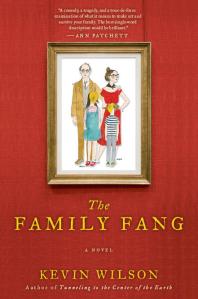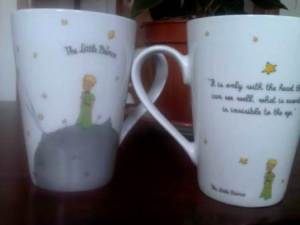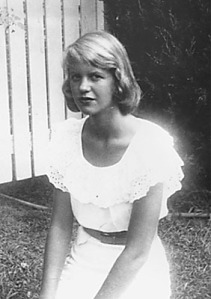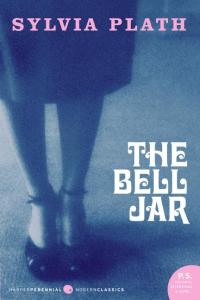The Family Fang was one of the best books I’ve read this year- it was smart, funny with a gripping plot but what really made this an enjoyeble rtead for me was the characters in this book. They were quirky and original and each one of the Fang family member just stood out.
The story is about a weird family, The Fangs: Camille & Caleb are the artist parents who love their children but put their art before everything else. Annie and Buster (aka Child A and Child B, as their parents addressed them during performances) are the children; Annie is an actress and Buster is a writer.
The book goes back and forth in time; going as back as the time where we see Camille and Caleb were just the two of them doing performance art and then coming back to the present time where Annie and Buster, both adults who are suffering setbacks in their careers and personal lives, moving back in with their parents. After they move back, their parents mysteriously disappear (the police think they are dead) and almost certain that this is just another stunt their parents called “art”, Annie and Buster decide to find them and confront them.
While the plot goes back and forth between past and present we witness a lot of the performance art that the family had done together. Annie and Buster had to kiss each other, Buster vomited in the middle of a fancy dinner in a fancy restaurant and there was this one time where Buster even attended a beauty contest dressed as a girl.
What made this a very interesting read was the approach the book had taken towards art. Camille, the mother, who also painted had to keep this hidden from Caleb who believed that art should not be rehearsed. His philosophy was that if you know that what’s happening is art, then it most certainly is not.
Their father, on several occasion throughout their childhood, had referred to painting and photography and drawing as dead forms of art, incapable of accurately reflecting the unwieldy nature of real life. “Art happens when things fucking move around,” he told them, “not when you freeze them in a goddamn block of ice.” He would then take whatever item was closest to him, a glass or a tape recorder, and smash it against the wall. “That was art,” he said, and then he would pick up the pieces of the shattered object and hold them out for his children to inspect. “This,” he said, offering the remains of the broken things, “is not.
As for the other characters; Annie was the angry child. She was the older and relatively stronger one who was also the first one to decide to break free from her parents and what they called “art” and go to Hollywood to be an actress. She was smart, talented but you could feel just how broken she was and how much her parent were inside her head from the choices she made.
Was this how trauma worked? she wondered. Those closest to it remained dumbfounded by the fact that those who weren’t present could drive meaning from it?
Buster was definitely my favorite Fang! He was the fragile, sensitive one who looked up to Annie. He wrote two unsuccessful novels and worked as a freelance writer for a magazine who gave him dull topics. He was so emotionally unstable that he simply ended his one and only long-lasting relationship by simply stating that he was going to the bathroom at a cafe, then walked out and never came back.
The other central idea the book flirted with was “art & kids”. The question of whether kids killed art came up on several occasions. The Fangs, when they found out that Camille was pregnant with Annie were pretty terrified that this child would simply be the end of their careers as artists. But then they surprised everyone and made their children a part of their performances- so much so that after Annie left, nothing was the same again.
At the end of the book, an old art professor and Caleb’s mentor says that it was him who said that kids killed art but now that he met Annie and Buster he understood that he was wrong. “It is art that kills kids,” he concluded.
The Family Fang is the story of a weird, artistic family that is original, witty and allows you to look at “art” from a different perspective. I recommend it to everyone.





